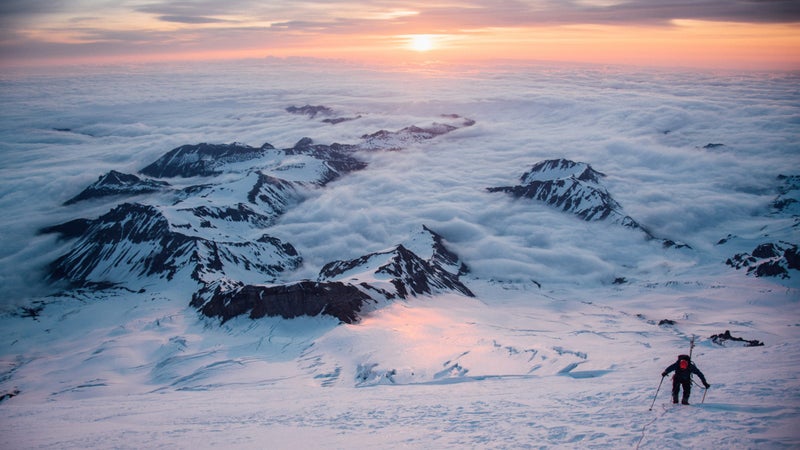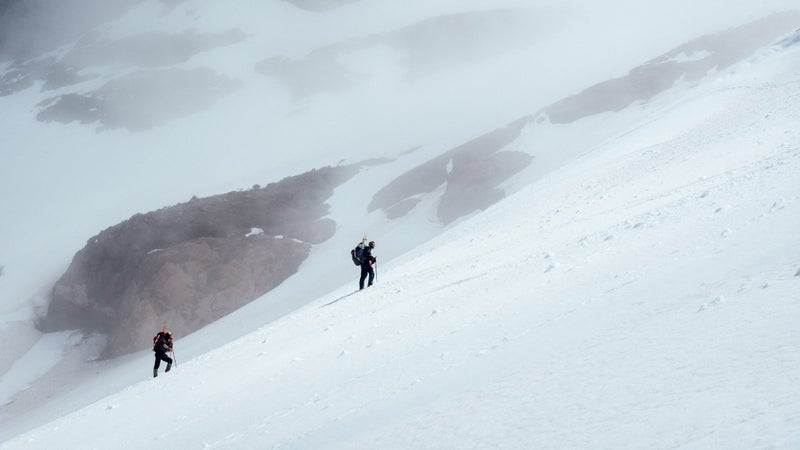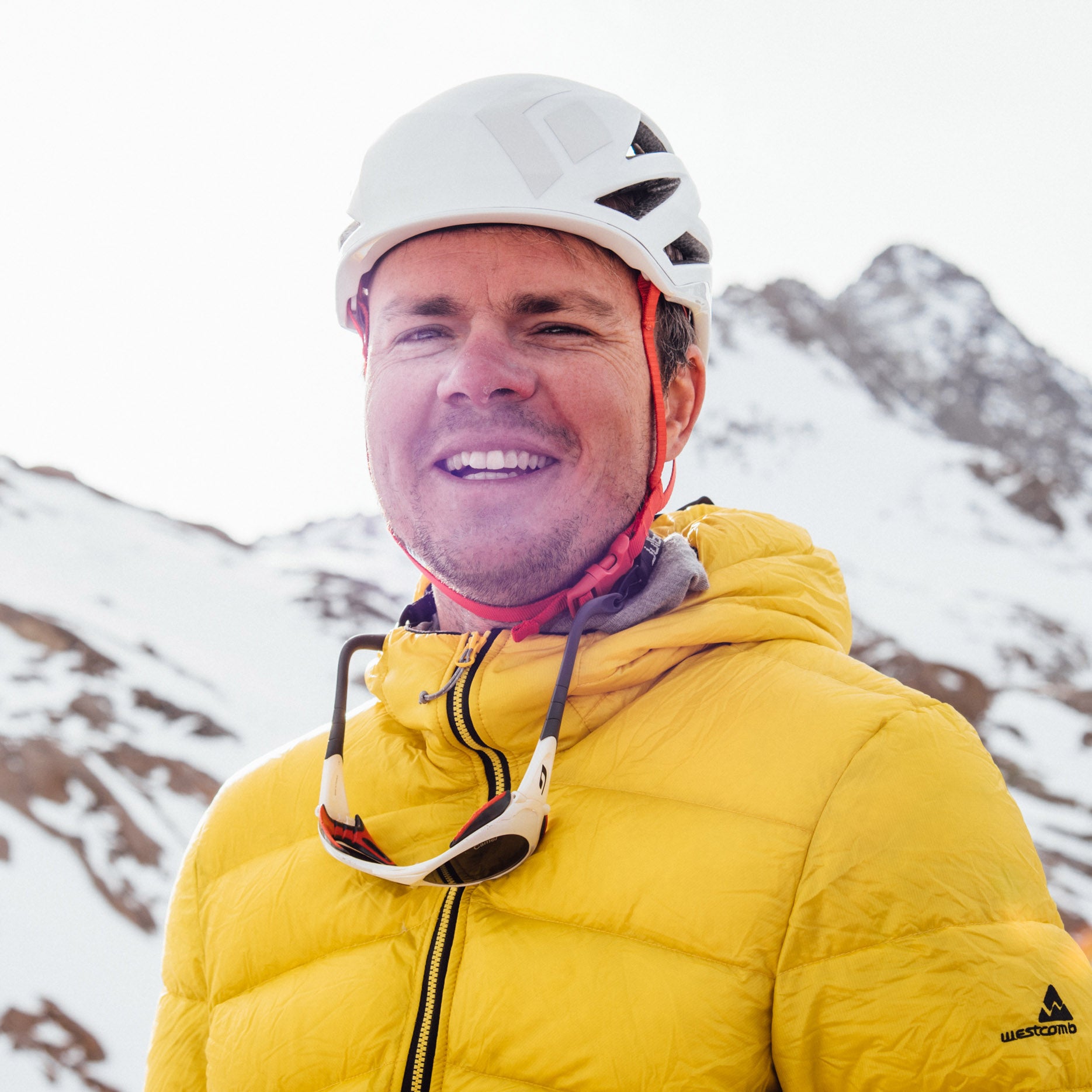Winter is coming. Is your insulated outerwear up to the task? Here’s the summation of everything I know about winter jackets, along with some recommendations for the stuff that works for me and the stuff that will save you money.
Should I Layer?
The answer to this is simple: yes. Otherwise you’ll be in a giant, heavy insulated parka that combines a weatherproof shell and insulation into one expensive package that doesn’t perform that well and restricts your movement.
I obviously have a preferred choice for playing outside. That said, if you’re shopping for something to wear around town that will keep out the Chicago or New York cold between subway and office, and then allow you to easily strip down to normal clothes underneath, a big Canada Goose–type deal might be for you. Just save yourself some cash and buy it from to get most of the look, quality, and performance for much less money.
If you do active stuff outdoors, you’ll want to adopt the layering approach. Doing so allows you to tailor your outfit to the needs of your environment and achieve much greater performance in the process.
As a refresher, the base layer’s job is to wick moisture and hold a thin layer of trapped air—the insulator—next to your skin. On top of the base layer, you wear a midlayer, which traps larger volumes of air to keep you even warmer. Think wool sweaters, fleece vests, and puffy down jackets. Then, on top of that, you wear a shell that keeps the wind and the rain out while breathing enough so the inside doesn’t get all wet and clammy with trapped body moisture.
A big advantage of dressing in layers is that it allows you to adapt to changing conditions. On very cold nights, you can add another midlayer. On warmer days, you can shed one. When you need to look nice, you can wear a classy shell. When you’re on the mountain, you can throw on a high-performance waterproof-breathable piece. Heck, you can even change all that around throughout the day if you need to. A big dumb parka is just warm. That’s it.

Down or Synthetic Insulation?
At a given weight, down is lighter and compresses better than any synthetic insulation on the market. Scientists haven’t yet replicated down’s chaotic shape in a lab. When down spreads out, it achieves great loft and traps huge volumes of air in the process. Traditionally, down would lose that ability to loft when wet, which is where synthetic insulation came in. But with a variety of now available, I struggle to see a huge case for preferring synthetic insulation for any reason but cost—a new synthetic piece will typically be cheaper than a new down one.
Shop around, and you can often find down jackets at bargain prices. To put an exclamation point on down’s superiority, it outlasts synthetic alternatives by many years. You can expect a quality down jacket to last a decade or more, while one with synthetic insulation will begin breaking down in just a few years.
Fill Power, Fill Weight, and Type of Bird
All down is not created equal. Lift the hood on a down-insulated item, and you’ll see three differentiators in performance and cost.
Where the Down Comes From
Different birds produce down of different qualities, but those depend more on how those birds are fed, cared for, plucked, and processed than on some fundamental superiority of ducks or geese. If a coat maker advertises a specific humane process, that’s something worth paying for. Most of the time, you won’t know about this.
More important is the ratio of down to feathers. This is important because there’s a big difference between a down cluster and a feather. Down is the airy, fluffy stuff that sits against a bird’s skin and provides insulation. At the down cluster’s center is a plumule—a soft, flexible array of tiny fibers that radiate out from its core. In contrast, a feather is heavier and doesn’t provide much loft, and its spiny quills can poke through the thin nylon used to contain insulation.
To be labeled as down, a product . The rest can be feathers. That sucks, so many companies specify their mix with a ratio or percentage. A product with 80/20 down to feathers is good, 90/10 is better, and 100 percent is best.
Having said all that, eider duck down is. It achieves the highest fill power commonly available (1,200) and is gathered from the nests of wild birds, rather than plucked. The luxury bedding industry snaps up most of the limited production of eiderdown, so it’s rare to find in outerwear. If you do find something made from it, it will be very expensive.
Fill Power
Fill power is the volume, in cubic inches, that an ounce of a certain type of down will loft into. Higher numbers are better. All other things being equal, down with a higher fill power will be lighter, more compressible, and warmer. You want the highest fill power you can afford. Anything 700 or above is pretty good, 850-plus is great. Many big, heavy all-in-one parka-type deals use a fill of 550 or so. Assume that’s what you’re getting if not otherwise specified.
Fill Weight
Fill power partially loses its meaning without fill weight, but this number is less commonly advertised. Fill weight is how much down is in a jacket. Given an equal fill power, a jacket with a higher fill weight will be warmer but less compressible than one with lighter fill weight. Looking at an item’s total weight can help you determine how much down it contains, but that number includes other stuff like zippers and fabrics, so it’s not a terribly good point of comparison.
https://www.youtube.com/embed/lt6KRKHpKhY
Is Your Jacket Really a Sweater?
When it comes to technical options, down jackets come in two main categories: ultralight sweaters and high-loft jackets. You’ve probably figured this out by now, but anything labeled “ultralight” or “sweater” or emphasizes its compressibility or packability won’t be as warm as something that makes you look like George Costanza.
Ultralight down jackets are a great all-round option for people doing neat stuff outdoors. Their extreme compressibility and light weight make them easy to carry, and they add a solid level of insulation, given their small packed size and low weight. If you need more warmth, you can always add a wool sweater or fleece midlayer underneath. My favorite ultralight is the lightest of them all—the —which is pretty good value given its “lightest ever” descriptor. I’ve had mine for two years now, and it’s held up admirably.
If you want a more casually styled option that still performs well, check out the . It’s cut and styled like a classy button-down shirt but brings with it all the packability of a quality ultralight.
If you’re facing very cold temperatures, you’ll definitely want the high-loft option. It’s a little harder to pack down, but for high altitudes and winter months, you just can’t beat four inches of insulation. I wear the . At just over one pound, it’s light enough to carry up a mountain, and its water-resistant shell fabric is exceptionally thin, contributing to a reasonable packed size. Westcomb stuff is expensive, but as the first adopter of new fabric technologies and with the highest-quality construction possible, it’s also some of the highest-performance outerwear around.
What makes a puffy jacket a midlayer? Look for thinner fabrics. Because they’re typically worn inside a shell, mids don’t need to keep rain off or strongly resist abrasion. Yeah, you can go without the shell in moderate weather, and the fabrics typically offer some degree of wind or water resistance, but they’re primarily designed to contain the insulation. This keeps a midlayer light and packable and allows you good freedom of movement, even while wearing several layers.
All About Shells
Do you want a hard shell or a soft shell to wear over your mid- and base layers? Honestly, you’ll want both—and maybe some casual options for wearing around town. Another benefit of the layering approach: it saves you money in the long term because it allows you to mix and match all your stuff, old and new.
Hard shells are impermeable to water. For a hard shell’s fabric to be considered waterproof, it has to withstand 10,000 millimeters of water pressure: Take a cylinder 10,000 millimeters tall, cover the bottom with that fabric, then fill the cylinder with water. A hard shell won’t let any through.
The downside to being waterproof is lack of breathability. Most waterproof-breathable shells only pay lip service to the breathable part. That’s where the soft shell comes in. These are only water resistant, but they breathe much better. I’m sure you can see why there’s a need for both. Particularly for active pursuits in cold, dry weather, the last thing you want is to get all sweaty. A soft shell will keep light wind and precipitation out without turning you into a clam.
You can dive way too deep into shells. If you’re interested, . All that stuff applies to the membranes you’ll find in big dumb parkas, too. In the winter, prioritize a shell that stops the wind. My favorite membrane for active duty, Polartec NeoShell, becomes less applicable as temperatures drop and winds rise.
If I’m hanging out somewhere cold without being all that active, I’ll throw something like a waxed-cotton or over a down midlayer and hit the town. Again, the ability to press your outdoor gear into double duty, where its performance benefits and packability outdo any casual wear, is what makes the layering approach so applicable to your entire wardrobe.

Features You Want
Making all this stuff work together and work for you depends as much on features as it does on outright performance. Consider your clothing as a total system, and shop accordingly.
Cuffs: Winter is cold—you will want gloves. Cuffs determine what kind and how you can wear them. Tight cuffs mean you have to wear gloves over them. Loose cuff mean you have to wear gloves under them. Water runs down, so for activities where your arms go from straight out to over your head, you’ll want your gloves to be over the cuff. If your arms will be straight out or pointed down, you want gloves that go under the cuff. Stretchy cuff closures benefit over-the-cuff gloves and work well in midlayers but not your shell. Button cuffs work well with under-the-cuff gloves. Velcro closures works well all the time. Get those.
Zippers: There’s nothing worse than having a zipper fail on the mountain. It’ll turn your down jacket into a loose blanket and your rain shell into a tarp. Look for strong, well-built zippers that run smoothly. When in doubt, buy YKK. A little zipper garage is nice to have under your chin: it prevents your whiskers from getting caught and keeps the cold zipper off your sensitive skin.
Pockets: Will they keep your hands warm? Hold your stuff? Will they keep that stuff dry? Where do you want that stuff to be? Can you get into them with a backpack on?
Hoods: Do you want one at all? I don’t like hoods on ultralight down or soft shells, but they’re a freakin’ necessity on hard shells and high-lofts. Will it fit over your helmet? Is there a brim to keep rain off your face? Does it flap in the wind?
Packs into a pocket: Pretty cool, and totally unnecessary if you’re already carrying a bag of some kind.
Fit: Does it fit you? Does it fit with the rest of your layers? Does it make your look fat? Can you move in it? You can affordably have down jackets and soft shells tailored. In fact, you should. You cannot get hard shells tailored.
Powder cuffs: Totally unnecessary unless you’re skiing in really deep stuff. Look for hard shells with removable powder cuffs for more versatility.
Adjusters: These allow you to cinch the jacket tight around your body or loosen it for layering. Nice to have in a hard shell. Your midlayers should just fit you off the shelf.
The Complete System
Look, I’m not suggesting you run out and buy 35 items of outerwear. I’m saying that paired with a quality down jacket will expand the capability of the other stuff you already own. The rain jacket you wear year-round will work great for keeping snow off your down midlayer. An affordable fleece jacket or wool sweater will expand that down’s insulation levels to new lows. Dressing like this will keep you warmer, drier, and more comfortable than any casual option ever will. Choose wisely, and the down jacket midlayer that keeps you warm on the slopes will do the same during a night out in Brooklyn. Just maybe wear it under a black shell instead of that fetching Day-Glo pink ski number.
About to press an old down item back into service for the winter? Do yourself a favor and wash it first. Doing so with will remove body oil and grime from the down clusters, reinvigorating their ability to loft. That will make your old jacket warmer, while helping it last longer. Just be careful to follow the care instructions both on the jacket, and on the bottle of down wash.
What about your lower half? is usually enough, especially if you’re moving, but will add more insulation if needed. , but I haven’t really seen a good use for them beyond lounging around camp in the cold. On the outside, I typically opt for . Especially in cold, dry weather, you just don’t need a totally waterproof lower half most of the time.


